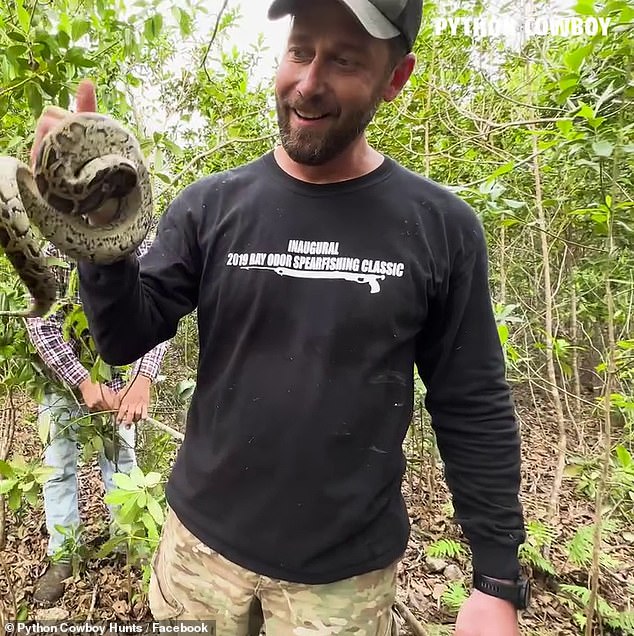A Florida-based python hunter shared video of the heart-stopping moment a Burmese python pounced on him and his camera crew.
Invasive Burmese pythons are becoming increasingly common in the tall grasses of South Florida, but a recent encounter shows these snakes are just as comfortable hiding in trees.
On Wednesday, hunting guide Mike Kimmel, known as ‘Cowboy Python,’ shared a video on Facebook capturing a tense interaction with one of the snakes.
The video, filmed earlier this year, shows a python becoming aggressive and lunging out to bite after Kimmel’s hunting dog, Otto, discovered its hiding place.
“We drove past this thing like three or four times,” Kimmel said in the footage. “I would have passed by there again if it weren’t for this (hunting) dog.”
Python hunter faces heart-stopping moment when Burmese python pounces on him
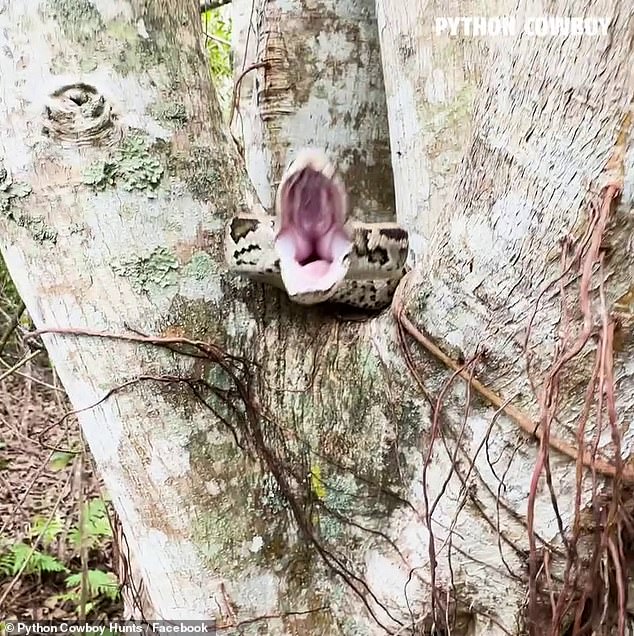
Hunting guide Mike Kimmel, known as the ‘Python Cowboy,’ shared a video on Facebook on October 9 of a tense encounter with a Burmese python that lunged aggressively after being discovered by his dog, Otto.
When hunters, including a contestant on the television show Swamp People: Serpent Invasion, attempted to capture the snake, it attacked several times and even attempted to climb higher to evade capture.
Kimmel eventually grabbed the snake by the head, revealing it to be a younger python, around four feet long.
“The little ones are the hardest (to catch) because the place to grab them is very small and they are fast,” Kimmel added in the clip.
The Florida Fish and Wildlife Conservation Commission has called for the removal of Burmese pythons from the wild due to their devastating impact on the Everglades ecosystem.
These nonvenomous snakes, which can grow up to 18 feet in Florida, prey on native wildlife, including deer, bobcats, and alligators.
Experts believe the species proliferated in the region after escaping from captivity or being released by pet owners.
Authorities recommend that Burmese pythons be humanely euthanized when captured in the wild to help control their growing population.
The exact location of this particular hunt was not revealed.
While damage from Hurricane Milton is still being assessed, experts warn of a possible increase in wildlife activity and advise residents to be cautious and avoid interfering with animals.
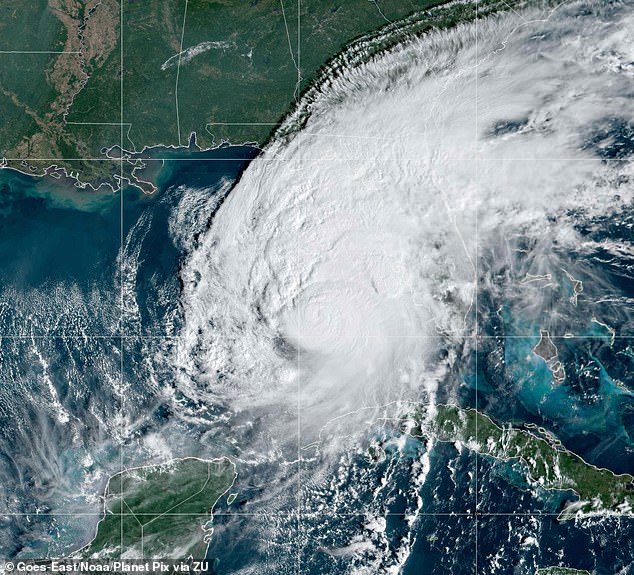
While damage from Hurricane Milton is still being assessed, experts warn of possible increase in wildlife activity
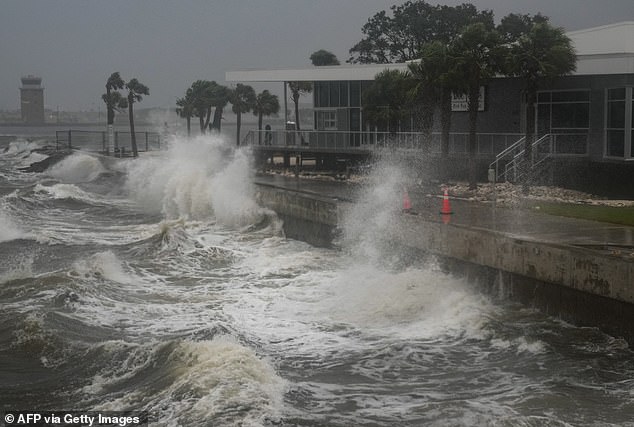
Animals such as alligators, bears, snakes and manatees may have been displaced or agitated by the storm.
Animals such as alligators, bears, snakes and manatees may have been displaced or agitated by the storm.
The Florida Fish and Wildlife Conservation Commission recommends staying alert and giving wildlife enough space. It is important to avoid trying to rescue or help animals during or after a storm, as this could put you at risk.
Severe weather conditions, such as high winds and flooding, can displace and disorient wildlife, allowing them to access unusual areas.
The stress and confusion caused by storms and hurricanes often results in wildlife behaving differently, potentially exhibiting more aggressive tendencies than usual.
While only six of Florida’s 44 species of snakes are venomous, the increased risk of encounters due to flooding makes maintaining a safe distance essential. Snakes may seek shelter in debris or houses and may be found in unusual places.
Christopher Gillette, who works at Bellowing Acres Sanctuary, an alligator and exotic animal sanctuary, has He warned that snakes that are displaced can often get mixed up in debris or be found washed up in unusual places. He tells people to “stay tuned.”
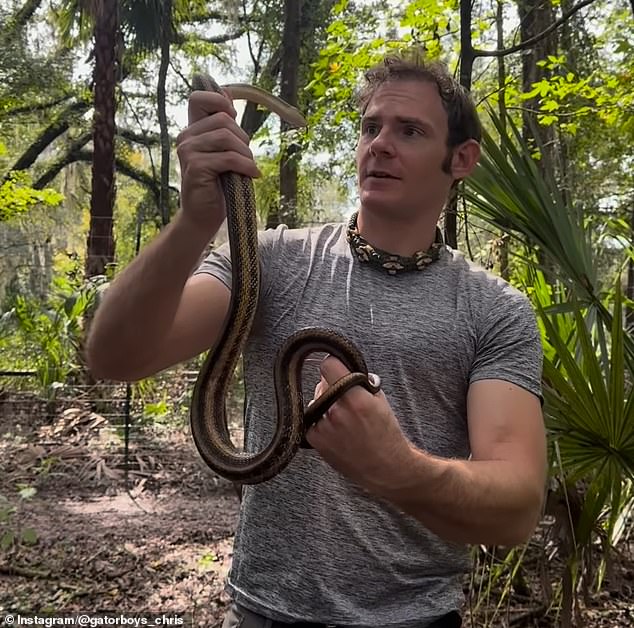
‘Keep in mind that the storm is going to send a lot of snakes on the move…there will also be venomous snakes on the move. Watch your step, especially in those floods,” Gillette said.
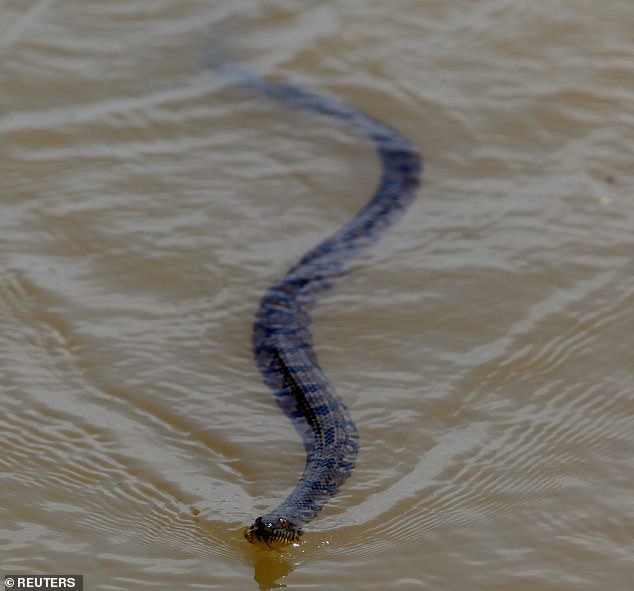
During storms, snakes can often be swept away by flood waters or caused to seek shelter in debris, houses, sheds or barns.
‘Keep in mind that the storm is going to send a lot of snakes on the move…there will also be venomous snakes on the move. Watch your step, especially in those floods. “If you’re cleaning up after the storm, picking up branches, definitely watch where you put your hands, be careful of snakes,” he added.
Snakes are not aggressive towards humans unless they feel threatened and generally prefer to avoid encounters. To best avoid snakes, the FWC suggests avoiding tall grass and keeping your hands and feet out of areas you can’t see.
Displaced wildlife, while not all pose a threat to human safety, it is important not to attempt to rescue or assist injured, orphaned, or dead animals during or after storms if it will put you in danger.

